Nikko is one of Japan’s most fascinating world heritage sites. It is easily accessible from Tokyo by train, particularly the new Spacia X train on the Tobu line.
Nikko is a one-day trip if you leave Tokyo on the first train and return on the last. The one hour and 47 minutes from Tokyo to Nikko can seem long, but if you take the Spacia X limited express, you may wish the trip was longer.
Japan is the promised land for train travel, but Spacia X is something extra. You may even want to forget Nikko because the train is such an experience.
In this article, I will describe the Spacia X’s features, including the front bar and the family box seats. I will also explain how to get tickets and what you should think about during the trip, especially if you bring children.
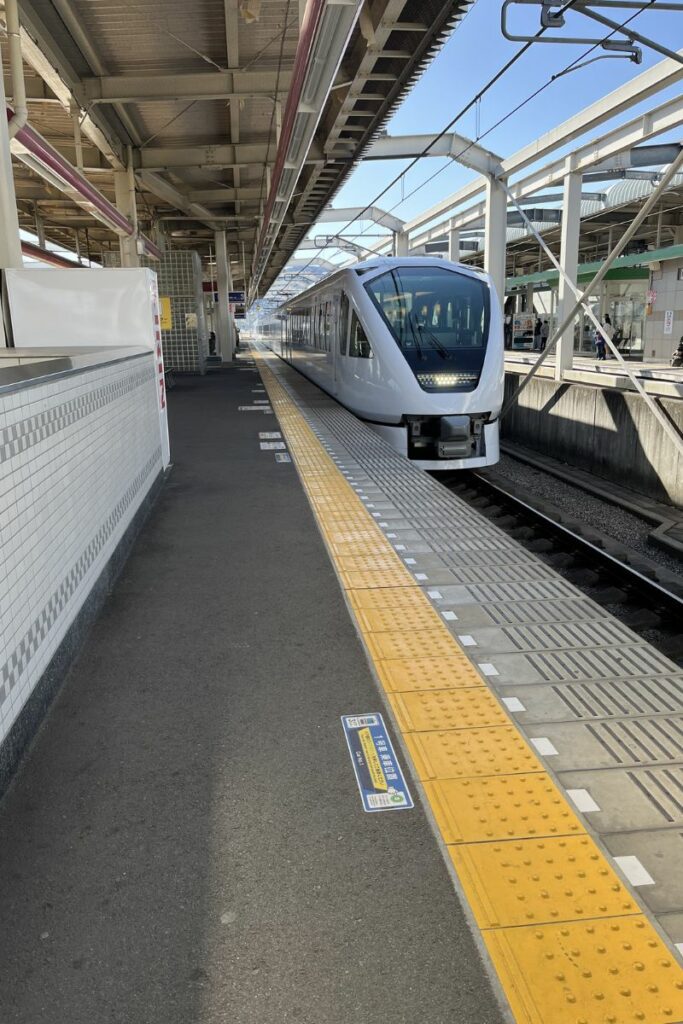
The Spacia X Train Service
The Tobu N100 (Spacia X) trains are the newest train type operated by Tobu Railway. They follow the original Tobu 100 (Spacia) trains, which went into service in 1990. The Spacia X travels from the Tobu terminus in Asakusa to Nikko and Kinugawa.
The ‘X’ in Spacia X appears in the ‘X’ patterns used in the train’s exterior design. It also symbolises the travel eXperience. The Spacia X is slightly faster than the older trains. It is also built for sightseeing, not for transporting commuters.
The Spacia X trains run as limited express trains. This means they use the same tracks as other trains but stop at even fewer stations than express trains and are correspondingly faster.
The Spacia X was introduced into service in July 2023, first with a limited number of trains and then with more. Today, there are six Spacia X train services between Tokyo, Nikko, and Kinugawa Onsen.
The original Spacia trains are still running from Asakusa but at a reduced frequency. The Spacia Kegon (or Kegon for short) goes to Tobu Nikko, and the Spacia Kinu (or Kinu) travels to Kinugawa. There are also Spacia trains running from Shinjuka to both Nikko and Kinugawa.
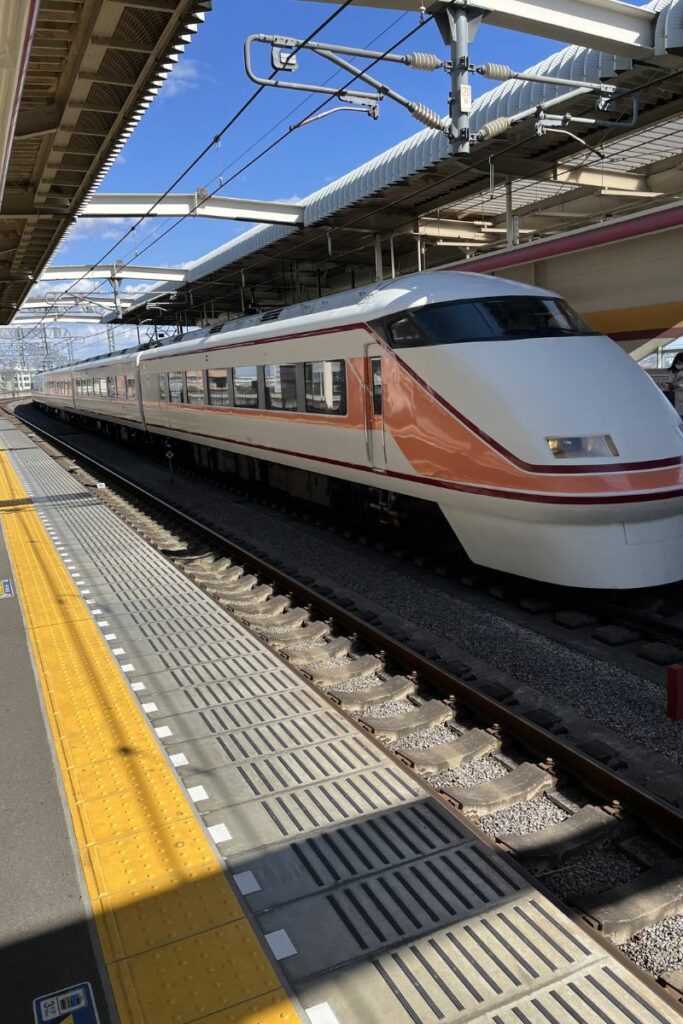
In addition to the Limited Express Spacia X and Limited Express Spacia train services, there is a third limited express train service to Nikko and Kinugawa: the Tobu 500 trains, branded as Revaty. The Limited Express Revaty Kegon travels to Nikko. The Revaty Aizu and the Revaty Kinu go to Kinugawa.
Where the Spacia X Stops
Since the limited express trains stop at only a few stations, it may be surprising that the Spacia X makes so many stops.
It stops at the main Tobu Nikko Line stations of Kasukabe and Tobu-Utsunomiya, as well as several intermediary stations in Tochigi. This probably adds about ten minutes to the ride, but given the quality of the ride experience, you may wish it was 20.
The Spacia X has two termini: in Nikko, where the Tobu train station is just a few hundred meters from the JR Nikko station and Kinugawa Onsen.
Frequency of Service
The Spacia X trains run six times a day from Asakusa, with four services to Nikko and two to Kinugawa (which don’t pass Nikko). The same is true in the other direction: four trains from Tokyo to Nikko and two from Kinugawa Onsen. During busier periods, an additional Spacia X service operates.
Spacia X is the newest train to service Nikko from Tokyo, but that does not mean all the older trains have been retired. The older Spacia train and the Limited Express Revaty are still in service, so make sure that you are booking the Spacia X unless you don’t care which way you get to Nikko.
There is only one limited express boarding platform for all three limited express services, so you must be careful to get on the right train.
Scenery and Landmarks Along the Routes
When departing Asakusa, the train passes several Tokyo landmarks. On the way to Tokyo Sky Tree, it will give you a nice view of the Sapporo Beer headquarters, with a nice view of the Beerglass Building as well as Philippe Starcks famous Golden Flame (or as the locals know it, the Golden Turd).
Before reaching Tokyo Sky Tree station, there are good, if brief, views of the Tokyo Sky Tree. You then enter the typical Tokyo suburbia, with hundreds of cookie-cutter carton-box houses squeezed in between gigantic rental complexes that look more like correction facilities than family homes.
The next stop is Kasukabe, known to anime fans as the home of Crayon Shin-chan, but you hardly notice. Then, the train stops a couple of times in Saitama and Tochigi, before getting to Nikko.
After Tobu Dobutsu-kouen, the view breaks up into vegetable fields. It stays that way through most of Tochigi. Although you can see the mountains in the distance, the views open up only as the train passes Utsunomiya and starts climbing up to Nikko.
Tobu Railways, the private railway company that runs the Spacia X trains to Nikko, also operates Spacia X and other trains to Kinugawa Onsen. As they pass next to the Nikko National Park, the views on the last third of the trip are even better than the route to Nikko.
How to Book Tickets
Two tickets are needed to ride a limited express train, such as the Spacia X: (1) a standard fare ticket and (2) a limited express ticket.
Standard Tickets
The Japan Rail Pass does not work on the Tobu lines, including the Spacia X, as the Tobu Line is a private line that is not part of the JR network. You need to use a standard ticket specifically for the Tobu Line.
A standard ticket can be an IC card, a Nikko Pass, or a regular ticket purchased at the station.
IC Cards
You can use an IC card such as a Suica as a standard ticket. Use your IC card at the ticket gate; the standard ticket price will automatically be deducted.
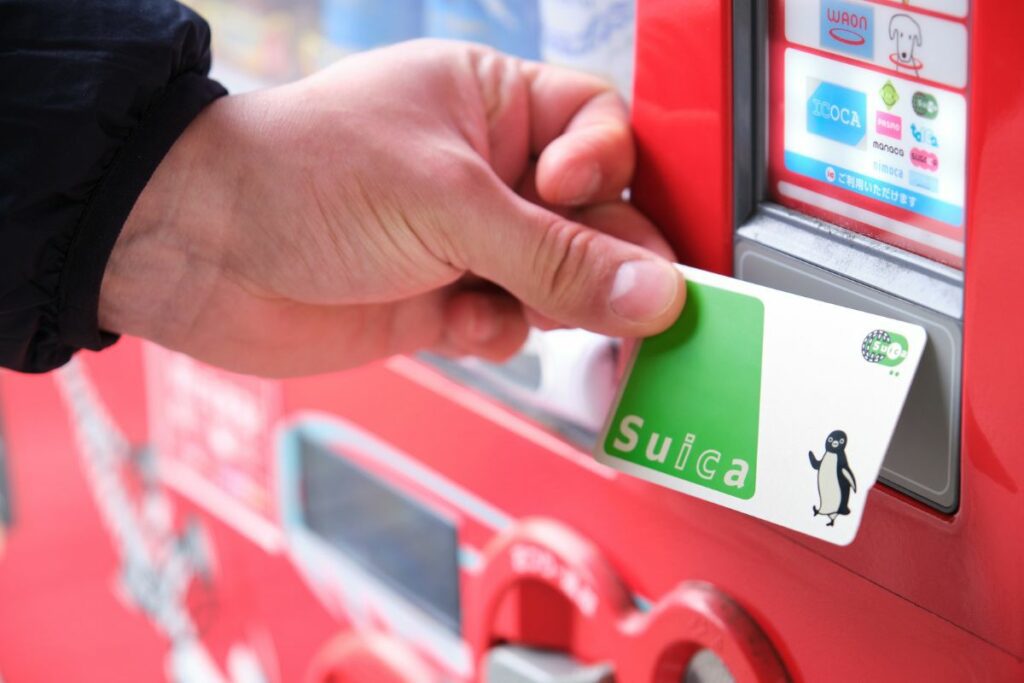
Nikko Pass
The second option is to use either a Nikko Pass All Area or a Nikko Pass World Heritage Area as the standard ticket. The Nikko passes are handy as they allow you to quickly and easily travel around the area using Tobu trains and buses. The pass also gives you discounts at certain facilities and stores in Asakusa, Nikko, and Kinugawa.
Do your sums to see if a Nikko Pass is worth it, but the value quickly adds up.
The cheaper World Heritage area pass can be used as a standard ticket to Nikko or Kinugawa, which already covers much of the cost. For example, the standard fare from Asakusa to Tobu Nikko is 1400 yen.
Then, you can use the pass to travel around Nikko’s world heritage sites and Kinugawa. Add discounts at shops, restaurants and various attractions (such as Edo Wonderland, Tobu World Square and ropeways like Akechidaira Ropeway), and the pass will quickly be worth it. Note that the pass doesn’t cover entrance fees to Nikko’s shrines and temples.
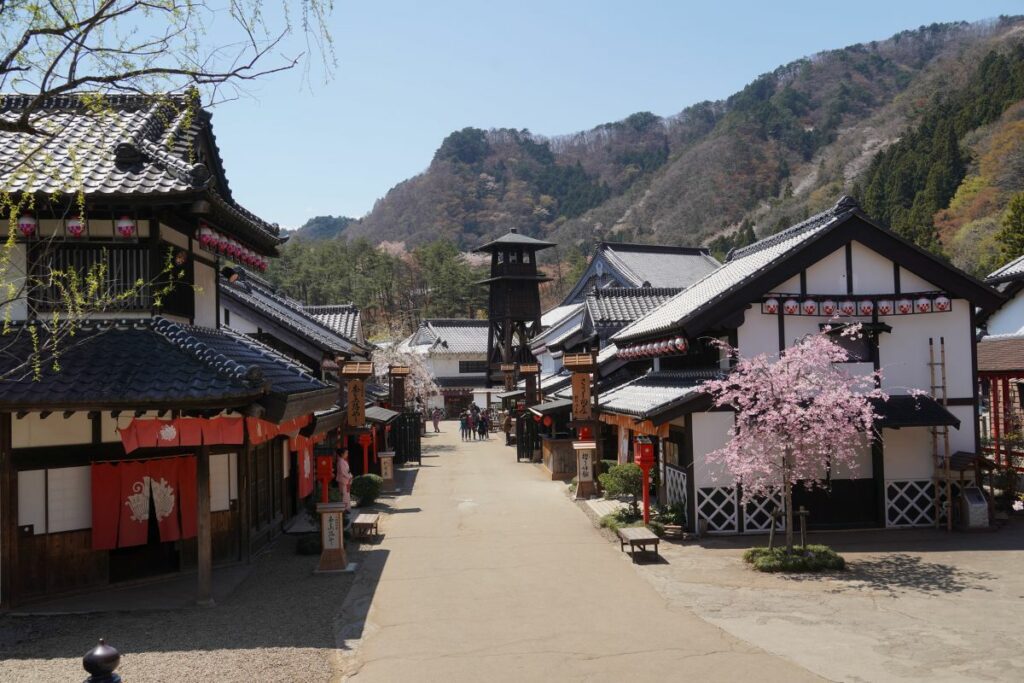
The more expensive All Area Nikko Pass can also be worth it, particularly if you stay in the area for a little longer. In addition to the benefits of the World Heritage Area pass, you can use it to travel further afield and see places such as Kegon Falls or take a cruise on Lake Chuzenji.
You can purchase Nikko Passes through Klook or add them as an additional item when booking Spacia X tickets with Klook. You can also buy the Nikko All Area Pass or the World Heritage Area Pass online through Tobu Top Tours. Another option is to get the passes through Tobu Tourist Information Centres.
Buy a standard ticket at the station.
The third option is to buy a ticket at the station, e.g. through a ticket machine. This option only makes sense if you don’t have an IC card and don’t see value in using a Nikko Pass.
Limited Express Tickets for Spacia X
You must also buy a limited express ticket in addition to the standard ticket. There are four ways to book limited express tickets on the Spacia X to Nikko:
- Book online through the official Tobu Limited Express Ticketing and Reservation Service webpage (Tobu Ticket).
- Book online through an online travel agency such as Klook.
- Purchase at a Tobu Tourist Information Centre.
- Purchase using an automatic ticketing machine.
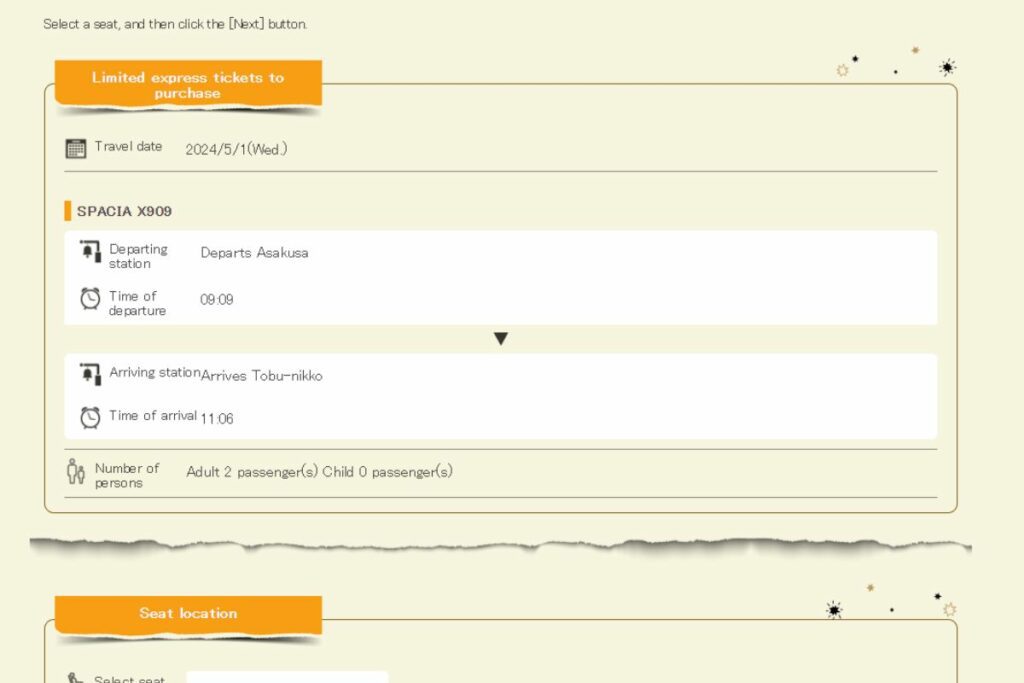
There are lots of different seat types on the Spacia X. The standard seats and premium seats don’t sell out straight away as they are less popular and there are more seats available. Box seats, compartment seats, the cockpit lounge and particularly the cockpit suite can book out very quickly as they are more popular and the number of seats for them is much more limited,
If you want a special experience in one of the more popular types of seating, book quickly through the Tobu Ticket site or Klook. If the type of seat is less important and you are a family of four, just book two seats rows behind each other and turn one of them around.
Fares for Children
Small children (under the age of six) do not need either seat reservations or regular tickets, but they are expected to sit in the same seat as their parents. If they need a separate seat, you will need child tickets.
Children between six and eleven years old need to have both a regular ticket and a limited express ticket. They pay half the price for both tickets.
Children aged twelve and above must pay the adult price for both the standard fare and limited express tickets.
Riding aboard the Spacia X
The Spacia X trains are built entirely for sightseeing, not for commuting. Earlier train generations, except the Seibu line LaView trains, were either commuter trains doubling as sightseeing trains; or refurbished older trains rebuilt with a luxury interior. But the Spacia X trains are built from scratch for a maximally comfortable experience.
Spacia X Exterior
The Spacia X trains have a space-age look, featuring LED headlights in the shape of a T for Tobu. The driver cabin is standard since the novelties are almost all in the passenger experience.
Considerable thought has been put into the design, which incorporates traditional regional features. From the outside, you first notice the cross-hatches around the windows and the ivory colour. The ivory colour comes from one of the main shrines in Nikko, and the traditional woodwork of Kanuma City inspires the geometric patterns.
The X in Spacia X has also seemingly been inspired by the same things that made Elon Musk change Twitter’s name, as the company makes a big deal of the unknown represented by X.

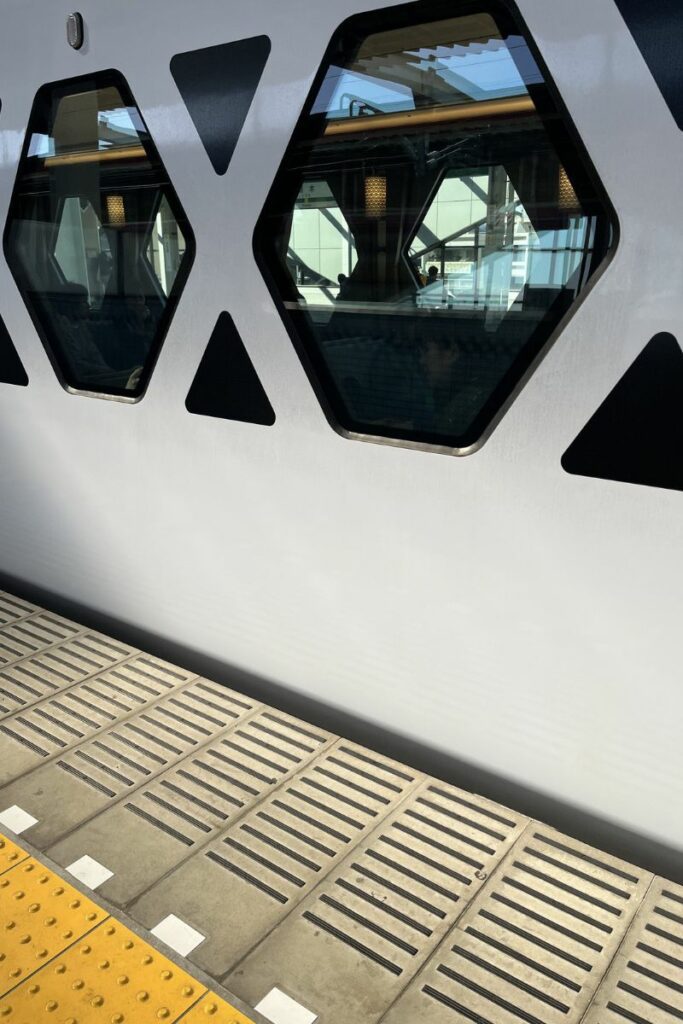
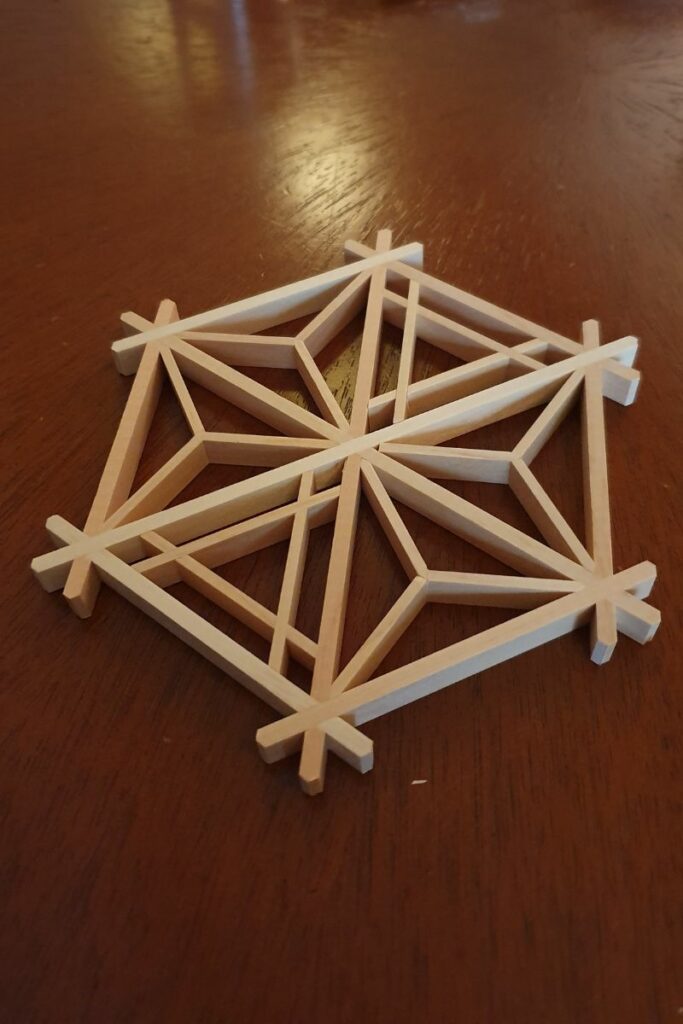
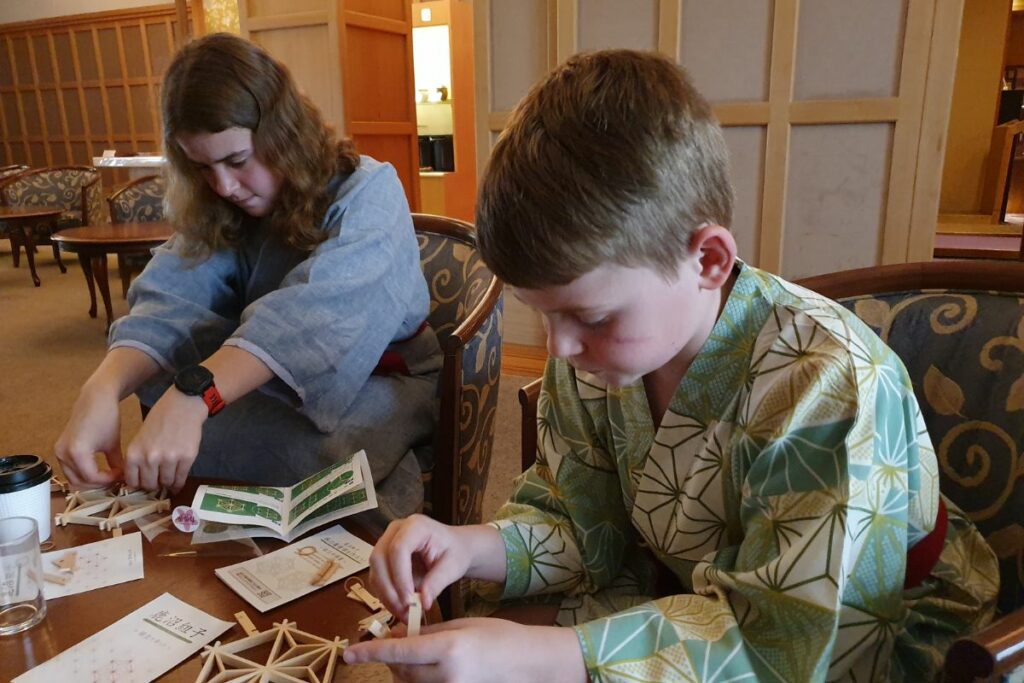
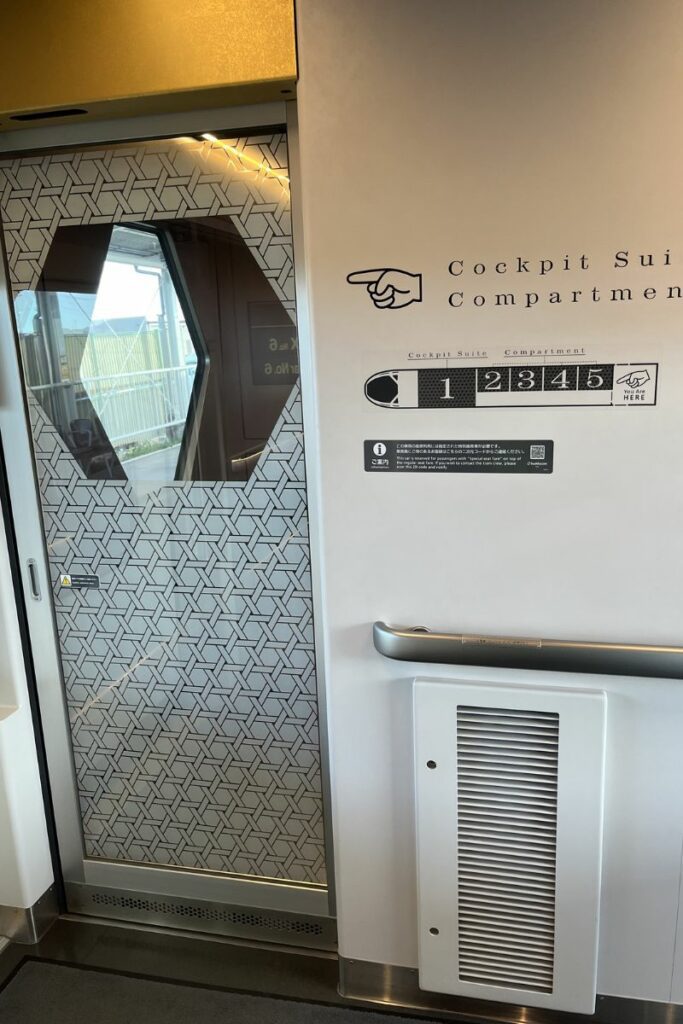
Boarding the Spacia X
Most stations have only one platform for the limited express trains, including the Spacia X. In some stations, the platform is shared with ordinary trains, but even where the platforms are dedicated to the limited express trains, the boarding for the different train types is not in the same locations.
To ensure you get to the right platform, check the overhead information signs, which will show which platform you should take the Spacia X train on.
On the ground next to the yellow hatched blocks at the edge of the platform are the signs showing where you will find the doors of the individual Spacia X train cars.
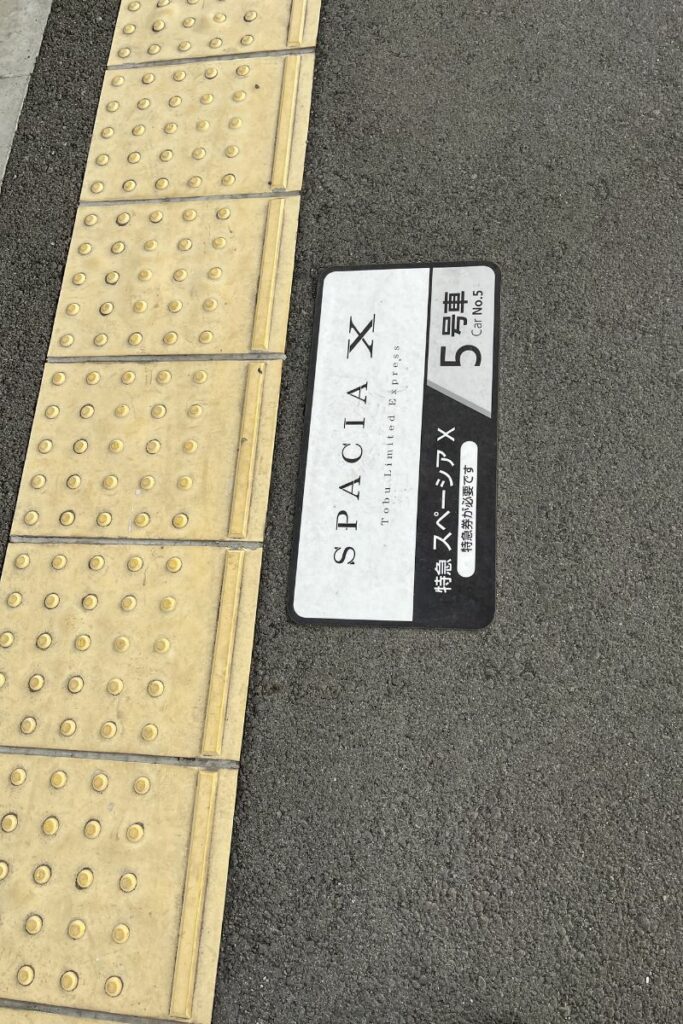
Check your ticket. The first number is the car, and the second is the seat number. Your ticket will say whether you have booked a private cabin, the panorama lounge, or one of the family box seats.
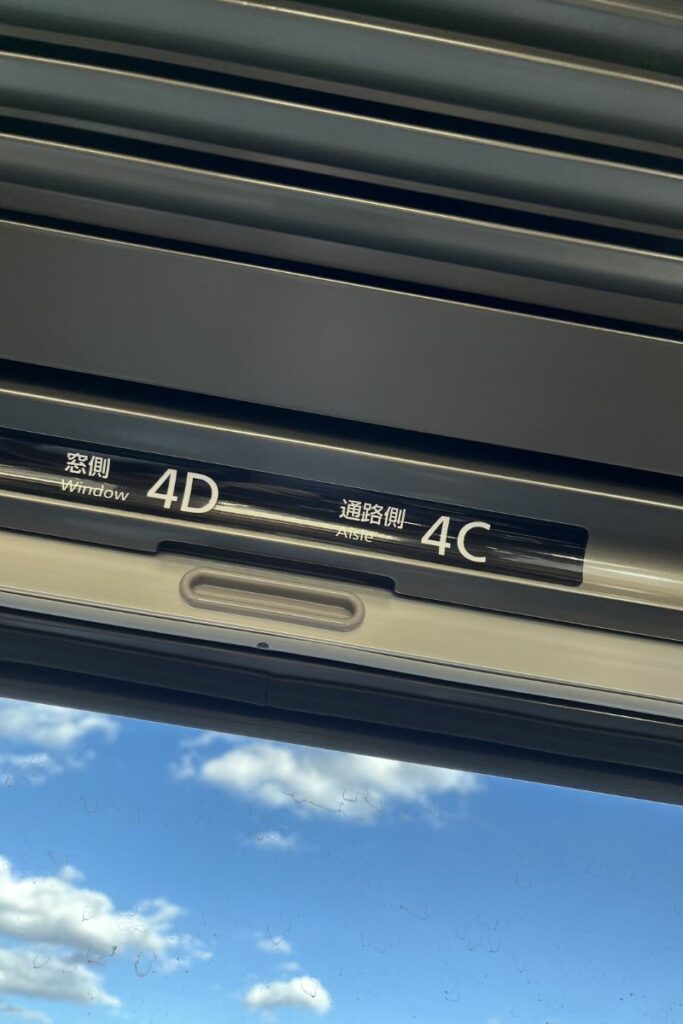
Lounges occupy the front and rear cars, so unless you booked a lounge or private cabin, you will be in car two if you have booked a premium seat or in cars three to five if you have an ordinary seat.
Spacia X Interiors
The Spacia X trains have two main types of seats: the standard seat, which is decently comfortable even for Western travellers but does not have any special amenities, and the more comfortable premium seat, which has amenities like reading lights.
The premium seat is as wide as a regular home lounge chair and features a reclining function that gives you precise control over the angle of your seat.
The part that makes the Spacia X trains stand out, however, are the other seating options, including box seats, compartments, and lounges. The cockpit lounge feels like a modern, upscale hotel bar, and the cockpit suite gives you a seat immediately behind the driver and lets you watch how they maneuver the train through a wall-to-wall window.
Cockpit Lounge (Car 1)
The cockpit lounge is a bar that would feel at home in a modern boutique hotel. It has a stylish colour scheme and furniture and a long counter where the attentive waitstaff prepares your orders.
The two-person spaces have comfortable armchair-style seats, while the four-person spaces have 2 x double sofas.
There is no full bar, but the feeling of sipping your beer as the train rushes through Tochigi is hard to beat. The bar serves beer and coffee from Nikko and donates part of the proceeds to further the education of guides in Nikko.
The cafe is primarily for passengers in car 1, but you can make an online reservation to order in the cafe from the Tobu Spacia X website.
In addition to the basic fare, you pay an extra 1,940 per person for the limited express fare +
- 500 yen for a one-person space in the cockpit lounge,
- 1,000 yen for a two-person space, or
- 2,000 yen for a four-person space.
For example, for two people in a two-person space, you would pay an extra 4,880 yen (2 x 1,940 yen + 1,000 yen) on top of the basic ticket price.
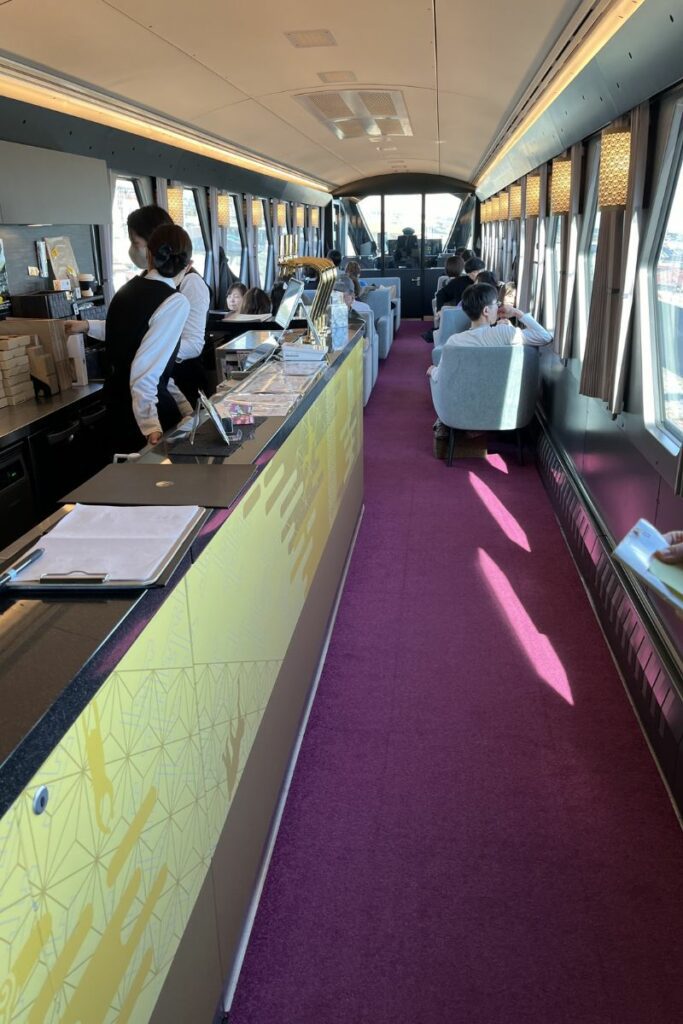
Premium Seats (Car 2)
The premium seats in car 2 are more comfortable than the ordinary seats, wider (but not that much), and with individual reading lights.
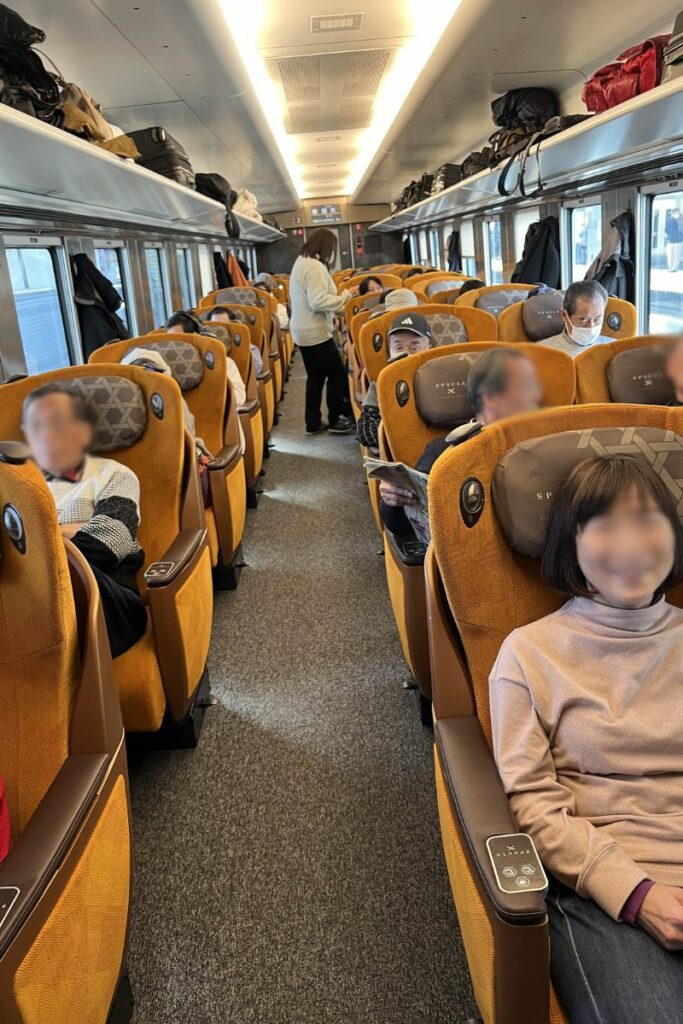
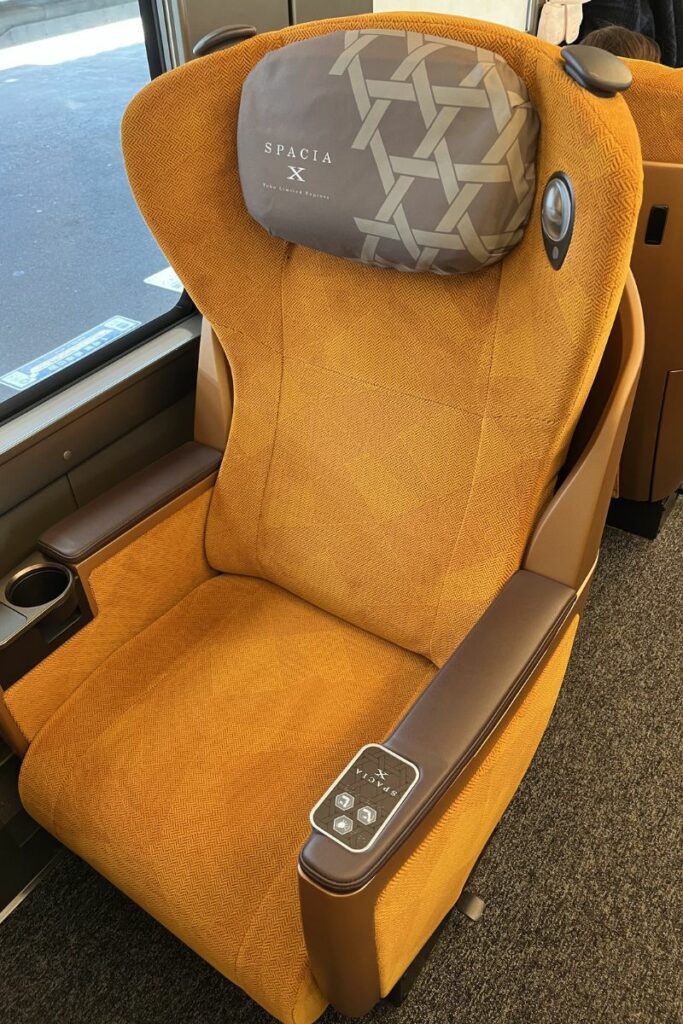
All seats have a big tray table that folds out of the armrest and plenty of hooks for hanging bags or clothes. They also have adjustable neck pillows and individual recline controls.
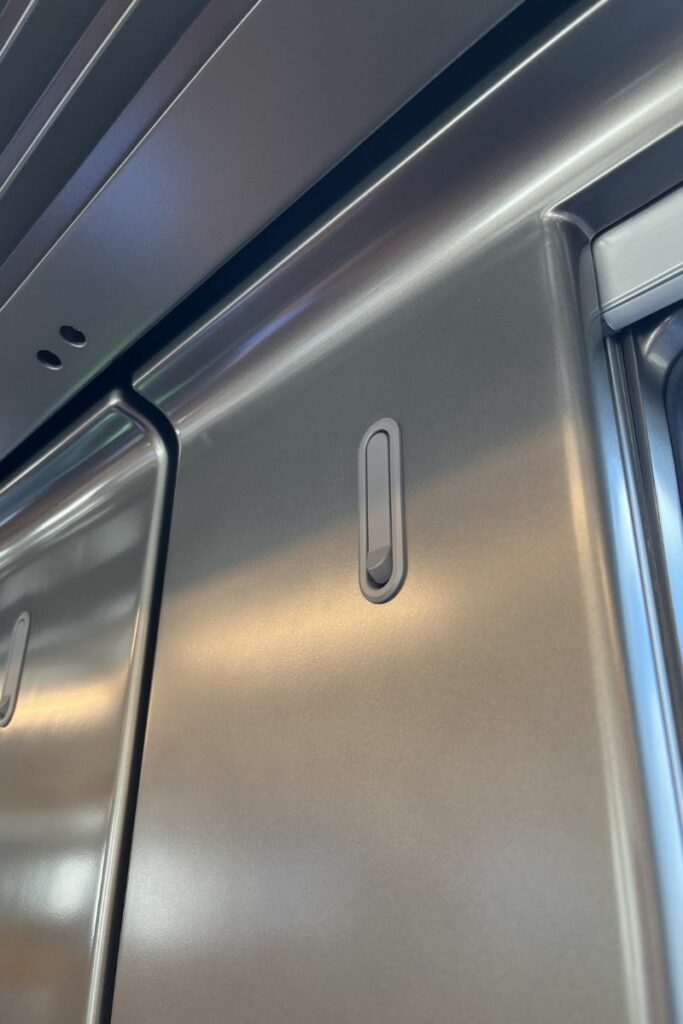
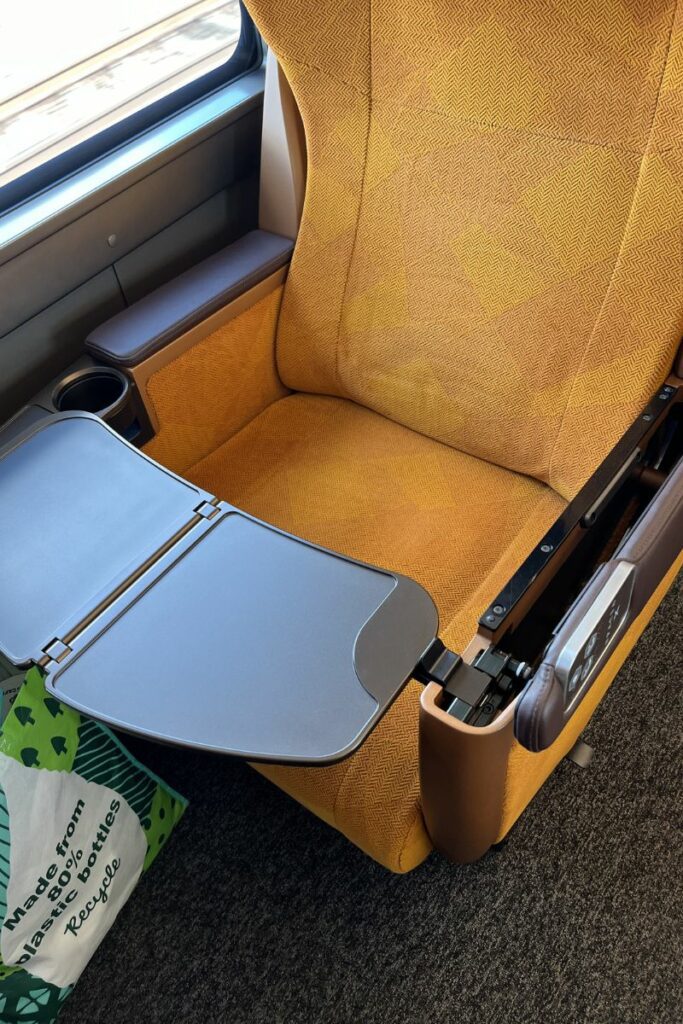
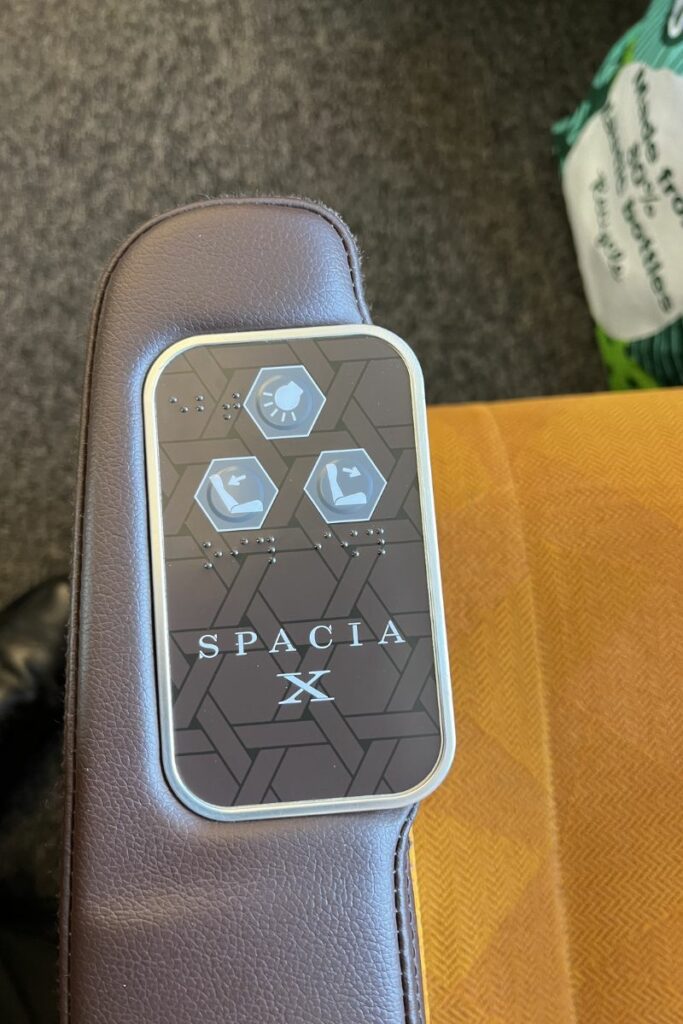
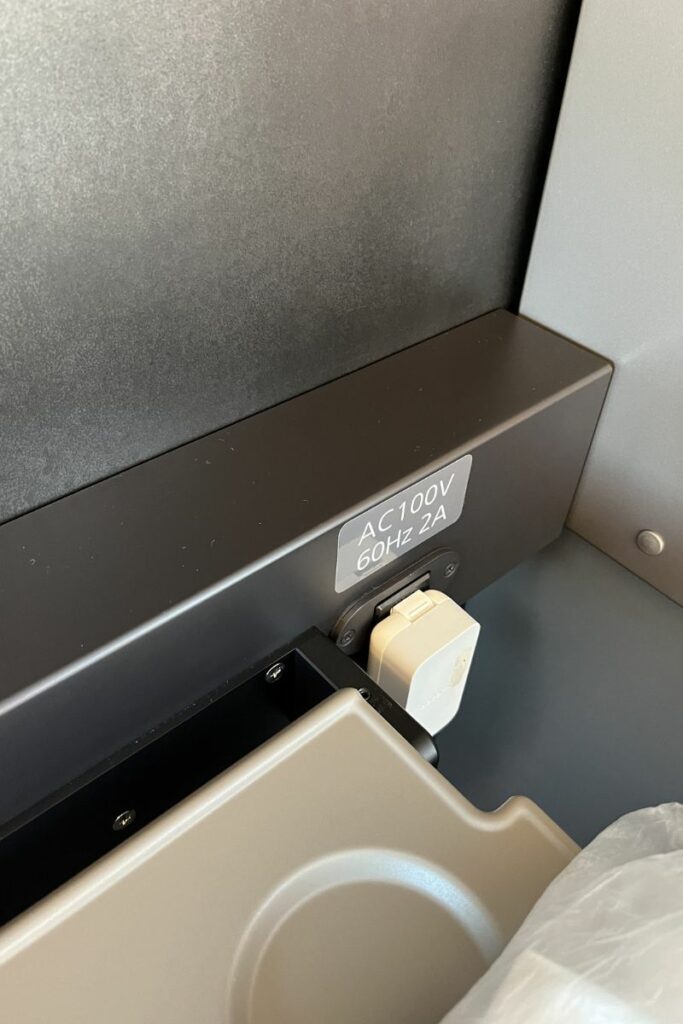
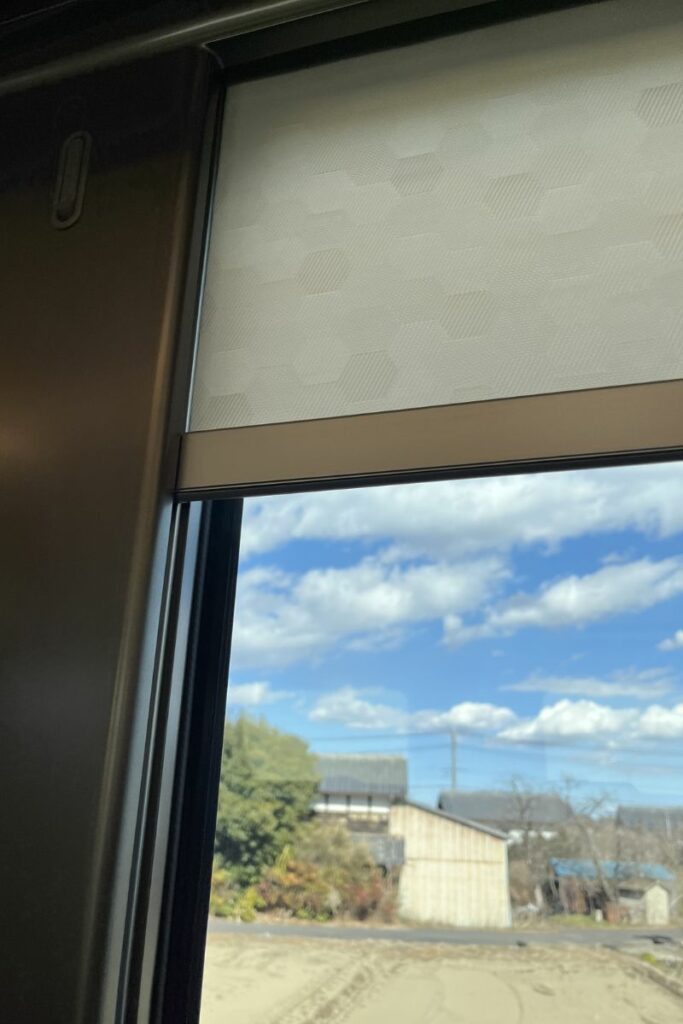
The luggage storage in the premium compartment of the Spacia X trains is primarily on the shelf above the seats, which is wide enough for a standard cabin suitcase.
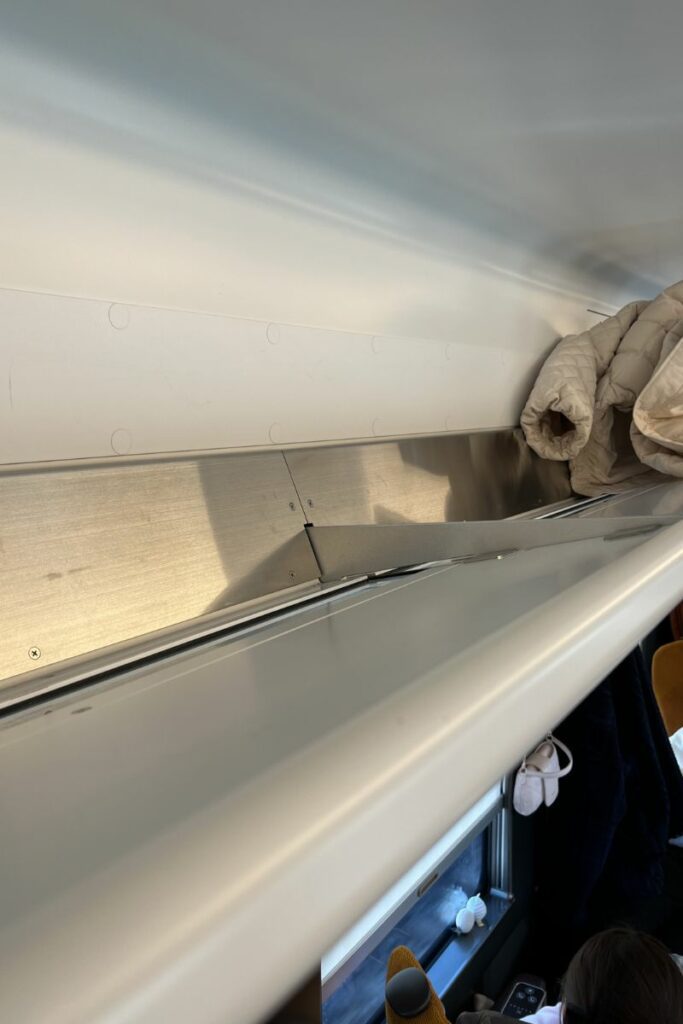
The premium compartment does not have storage for large luggage items, but there is space for large luggage in the compartment at the end of the cars. However, there is no storage for strollers or wheelchairs.
In addition to the basic fare, you pay 2,520 yen per person for a premium seat. So, for two adults, you would pay an extra 5,040 yen.
The premium seats can be as expensive or more expensive than other seating options, such as the cockpit lounge, or the box seats. You get a more comfortable seat but lose other amenities such as easy access to the bar/cafe or extra privacy.
Standard Seats (Cars 2-5)
The standard seats are in rows of four (two plus two with an aisle between them), and they are considerably simpler than the premium seats, although only slightly less comfortable.
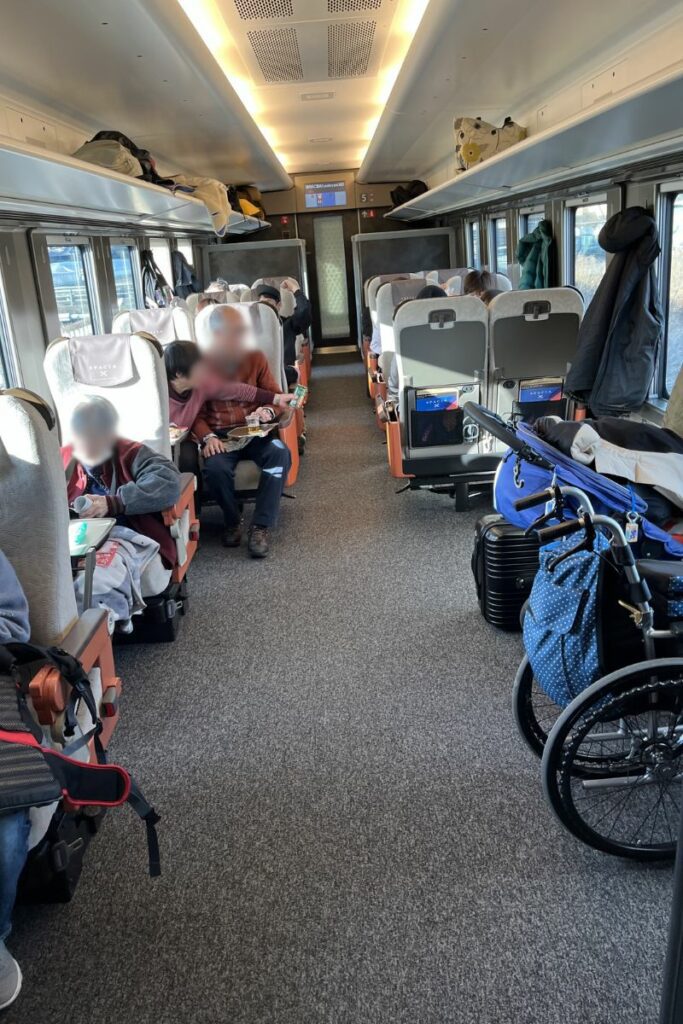
Each seat can recline, and just like in the premium seats, there is an electric outlet for each seat. However, there are no reading lights, and the standard seats are slightly less wide than the premium seats.

In addition to the basic fare, a standard seat costs 1,940 yen per person. So, for two adults, you would pay an extra 3,880 yen.
You only save about 600 yen per person by booking a standard seat compared to a premium seat. If premium seats are still available when booking, go for the premium seat.
Box Seats (Car 5)
If you are a family, especially if that family includes small children, you appreciate the ability to give them space to climb around, stretch out, or even go to sleep.
Families often book two rows of seats after each other and turn the second row around so the seats face each other. This is useful enough, but on the Spacia X, there is another alternative: the box seats. A box seat is designed to seat two passengers, but the seats are wide and could accommodate four people if you have younger children.
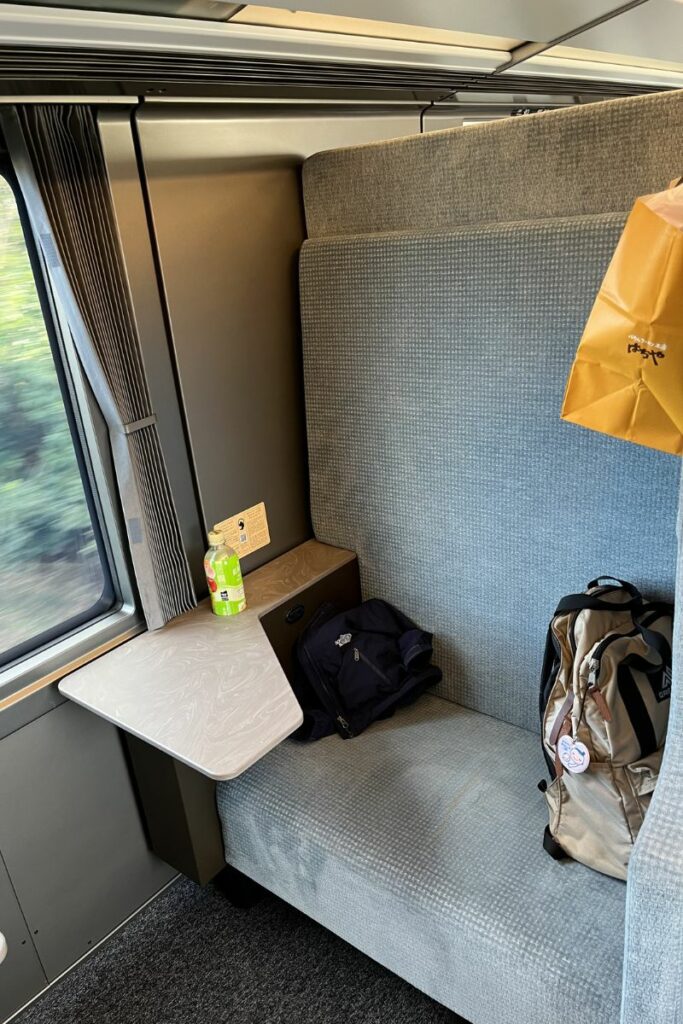
The box seats have partitions that provide some privacy from the rest of the car, and they have terrific views out the window. They are also a good workspace option if you need to work remotely while on the train.
If you want to book a box seat, you must pay the limited express surcharge of 1,940 per person + an additional 400 yen for the box seat space (on top of the basic ticket price). So, for two adults, you would pay an additional 4,280 yen (2 x 1,940 yen + 400 yen for the space).
Compartments (Car 6)
Compartments are even better for families and groups than box seats. There are four compartments in Car 6, which are on the way to the cockpit suite. It’s great that you can book your own space for privacy or to let your children sleep.
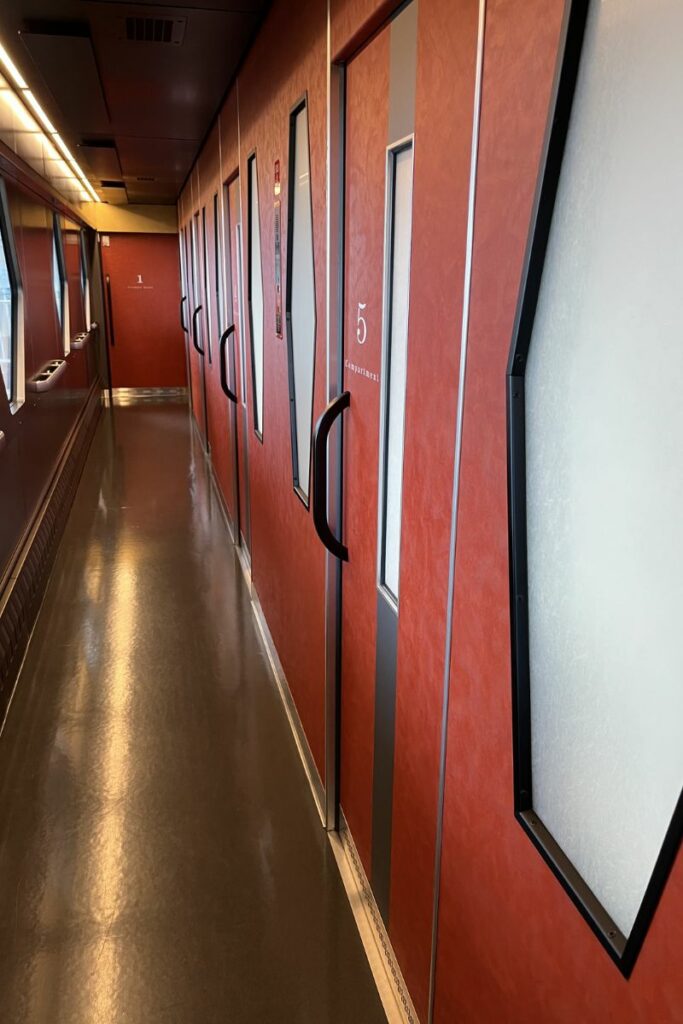
In addition to privacy, the compartments have more comfortable U-shaped sofa-style seats and a larger foldable table.
If you want to book a box seat, you must pay the limited express surcharge of 1,940 yen per person + an additional 8,000 yen for the compartment room (on top of the basic ticket price). So, for two adults, you would pay an additional 11,880 yen (2 x 1,940 yen + 8000 yen for the room).
Cockpit Suite (Car 6)
In ordinary trains, there is always a small crowd at the window behind the driver, gawking at her every move. In the Spacia X, this is the cockpit suite, one of the most popular features of the train.
There is only one cockpit suite (for up to seven people), and it books out very quickly. As soon as bookings open, you usually need to book 30 days in advance, and even then, you could miss out (particularly in peak periods). You have a better chance to book this space on weekdays (later in the day if you’re heading to Nikko).
Instead of a small aperture, the entire wall behind the driver is a window, allowing you to observe her slightest action. When car 6 is at the end of the train, the view backward is panoramic, but of course, there is no driver.
The cockpit suite has easy chairs and tables, making it ideal for discussions or parties. The lounge can be rented by groups, in which case it is off-limits to others.
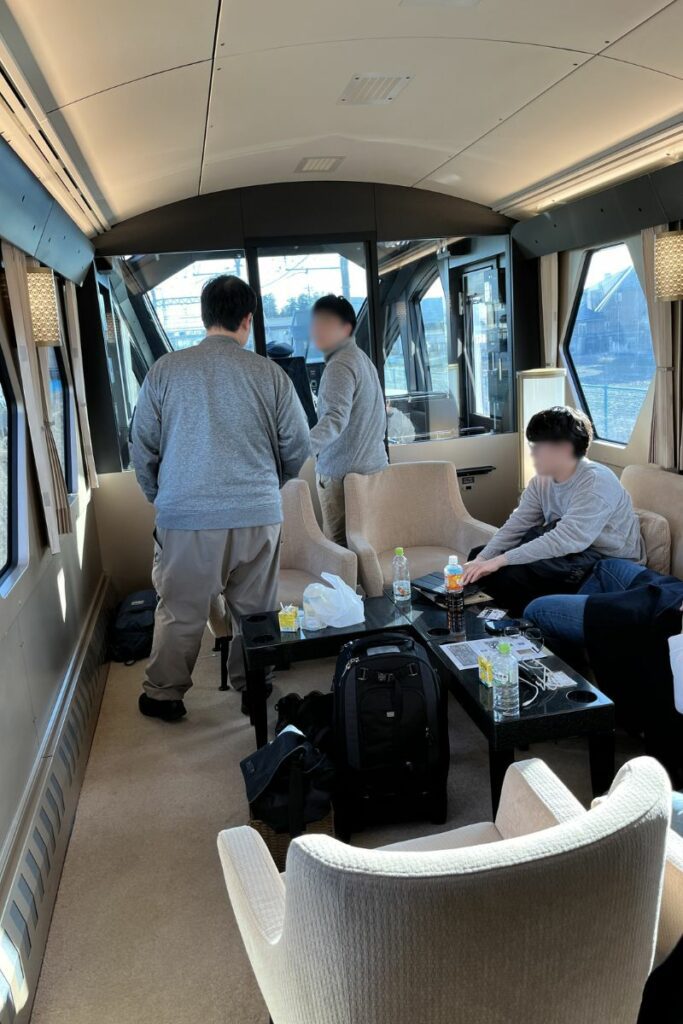
If you want to book a box seat, you must pay the limited express surcharge of 1,940 yen per person + an additional 18,000 yen for the cockpit suite (on top of the basic ticket price).
If you wanted to be decadent and book out the whole space for just two adults, you would pay an additional 21,880 yen (2 x 1,940 yen + 18,000 yen for the room). The room has space for seven people, so it would become much more economical if you had a larger group.
The cockpit suite enables travellers to experience driving the train without actually doing it.
Onboard Amenities
The Spacia X trains offer a luxury travel experience with state-of-the-art amenities that are among the most modern in the Japanese train fleet. Onboard Wi-Fi, activated by scanning a QR code in the seat pocket, makes it easy to stay in touch during the trip.
Instead of a vending machine tucked away in a corner, the Spacia X has a bar with coffee and beer service.
That is not the only advance in amenities aboard the Spacia X. The trains were built to be accessible. Wheelchair parking space and barrier-free entry from the platform are included, as are accessibility features in the toilets.

The toilets are also vastly more modern than on comparable trains, no matter how modernised. They have a built-in baby changing facility and a chair for your toddler.
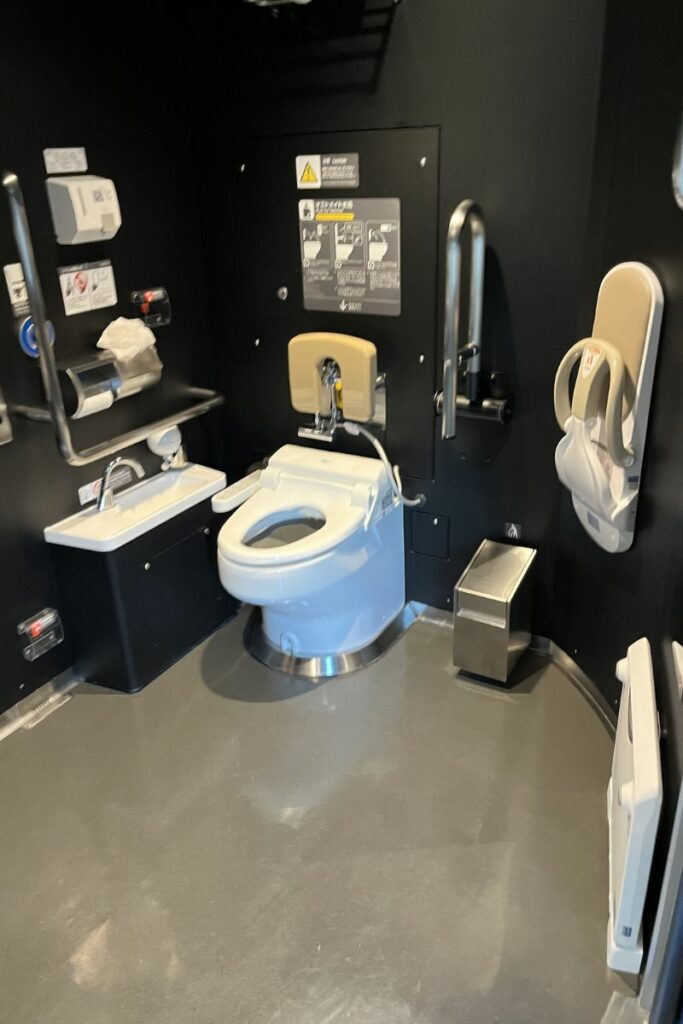
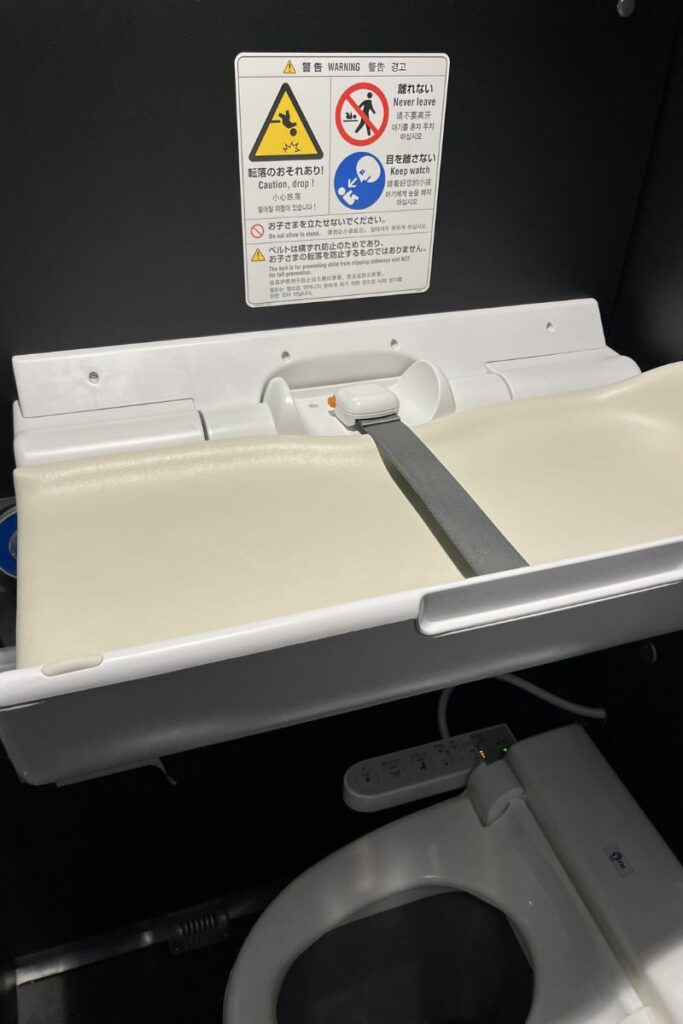
The storage between compartments features locks for luggage, something new on Japanese trains. The locks are activated by the user’s Suica or Pasmo card.
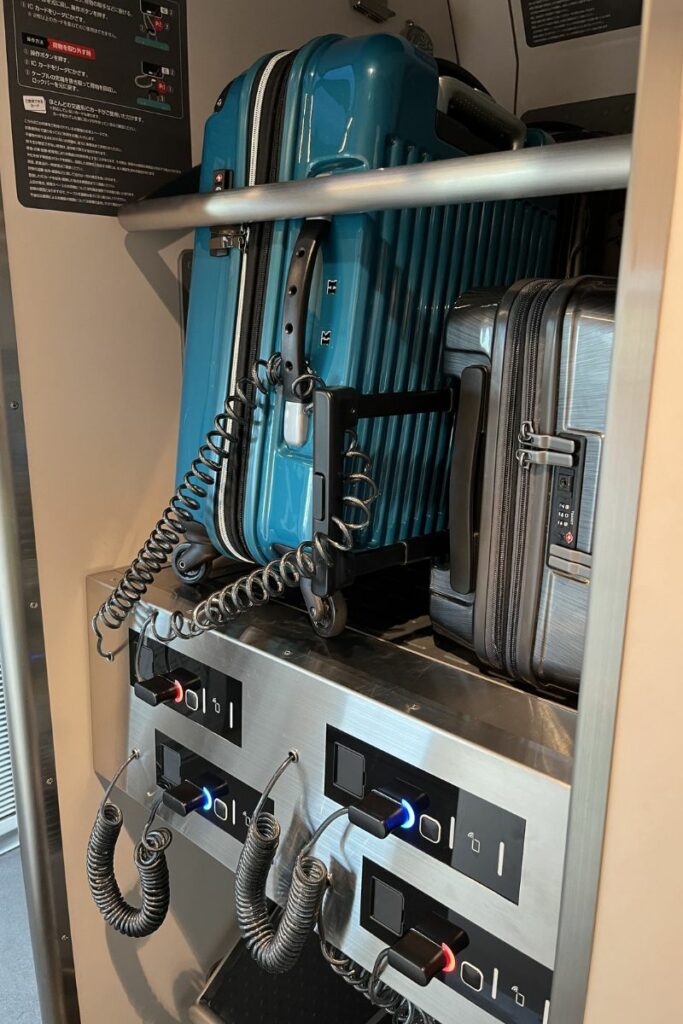
As on all Japanese long-distance trains, garbage bins are in the space between the cars.
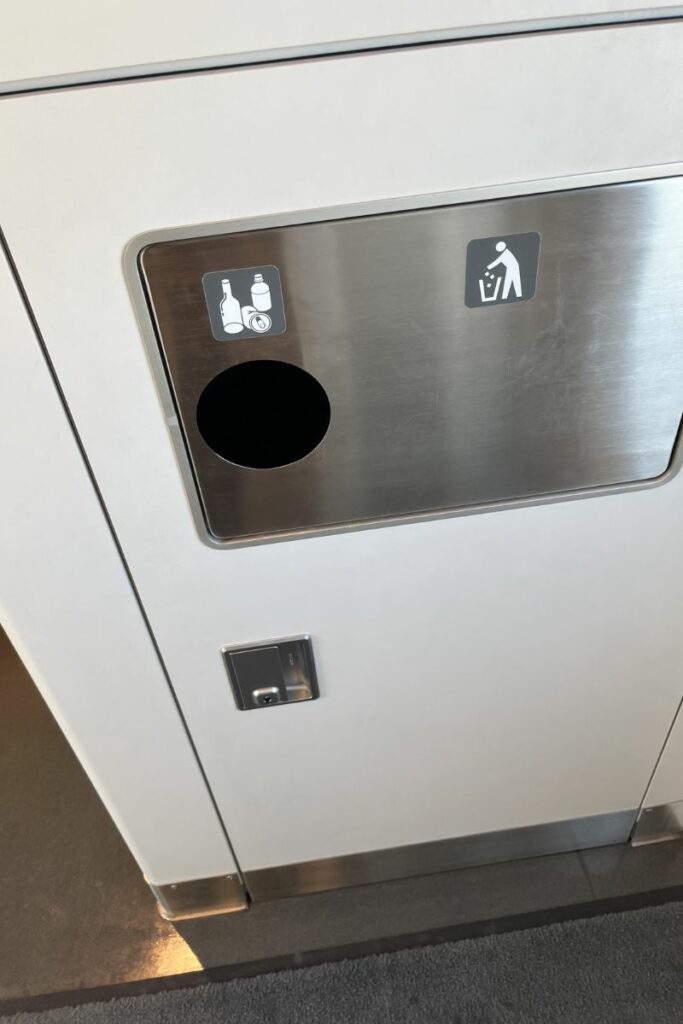
Train Etiquette
Japan is famous not only for its many trains but also for the quiet of the people who ride them and the orderly operation of everything, both in the trains and the stations.
Lining up in an orderly way ensures good behaviour even before you can enter the train. All seats are reserved on the Spacia X, and there is ample luggage space, so trying to get ahead in the queue makes no sense.
In trains where all seats are reserved, like the Spacia X, there is no need to offer your seat to those who need it better, and there is also no need to admonish you to sit down in your seat while eating your bento.
As in all Japanese trains, you need to switch your phone to manner mode (no ring signal, only vibration) and not disturb fellow passengers by talking on the phone. If you absolutely must take a phone call, go to the space between the cars, where you will not bother anyone.
‘Not bothering anyone’ is the basis for all the rules regarding train behaviour, from shushing toddlers when they are too loud to making sure your earphones do not leak sound. If you think, “Will I or my kids bother anyone now?” then you’ll be fine.
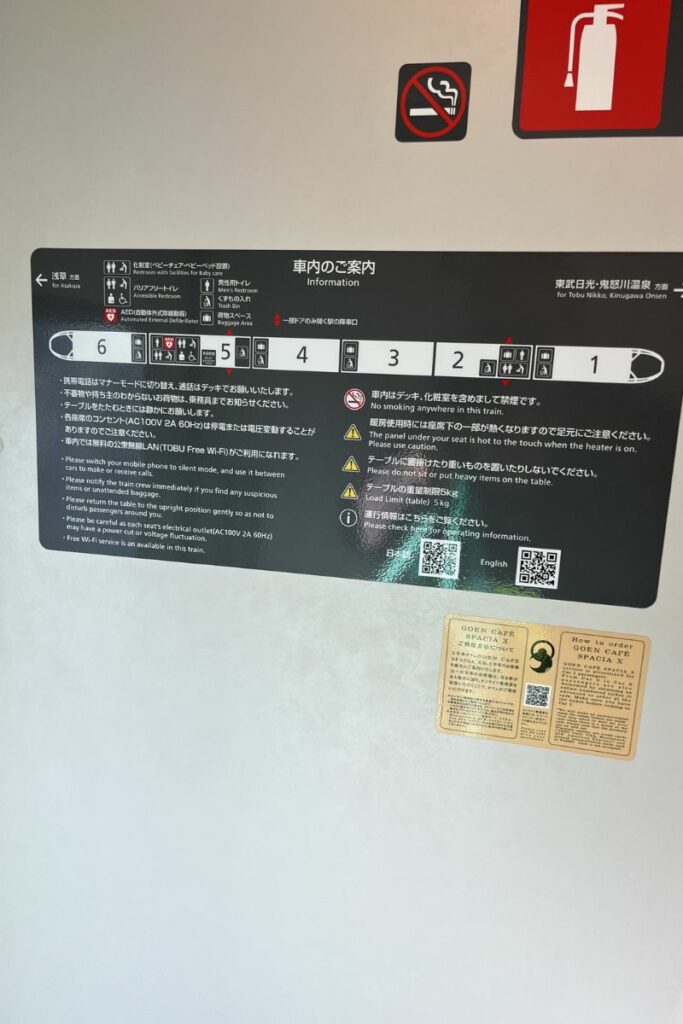
FAQs About the Spacia X
If you’re planning to travel to Nikko from Asakusa aboard the Spacia X, here are the answers to some of the more commonly asked questions about this train service.
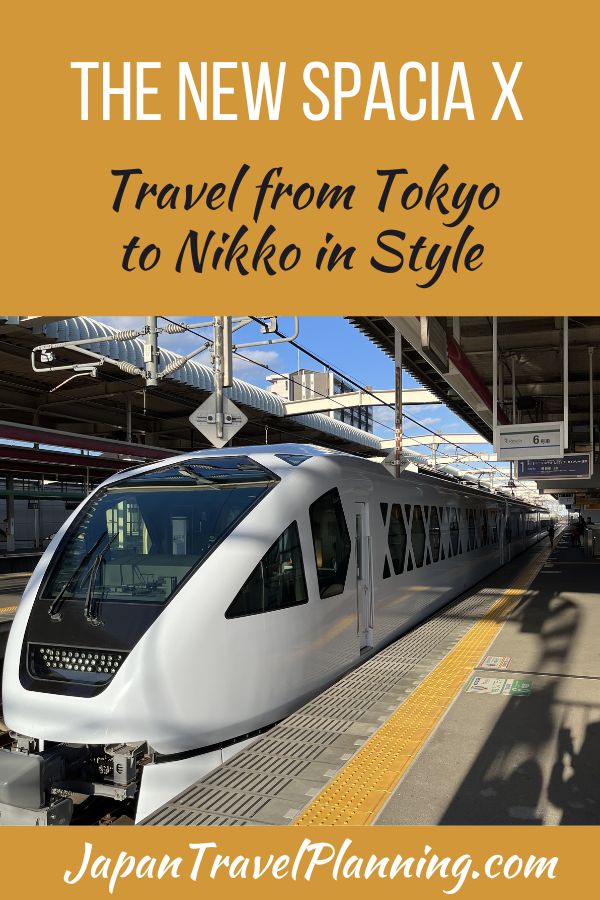
Join the Japan Travel Planning Facebook Group or Discord Server
You are also welcome to join our Japan Travel Planning Facebook Group and our Japan Travel Planning Discord Server – they are great resources to enable you to ask questions about your upcoming trip to Japan!
Disclaimer: This article contains affiliate links. If you book after clicking on one of these links then we may receive a small commission at no extra cost to you.

